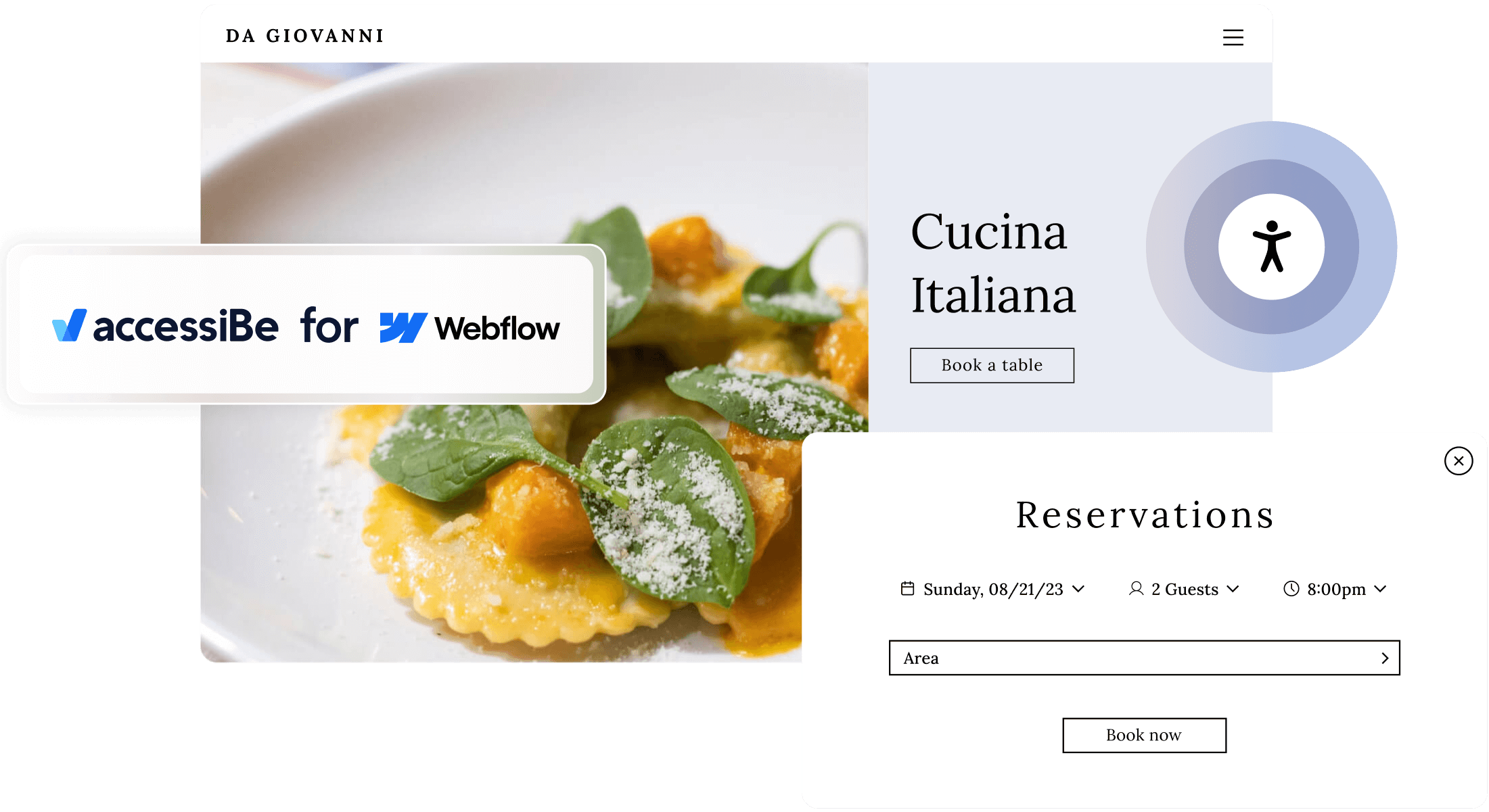Webflow is a visual web design tool that streamlines the process of designing a website without having to use code.
Webflow stands out from the crowd by prioritizing exceptional web design features for website builders. This has, by their admission, caused them to offer accessibility as an afterthought meaning Webflow websites by default are not accessible to people with disabilities.
See the accessiBe installation guide for Webflow here
Currently, Webflow does not have any built-in components for web accessibility, and although they’ve adjusted some features to be more ‘accessible-friendly’, it is still heavily design-focused. This means that any accessibility features that aren’t related to design, and still the majority of design ones, are not available to Webflow users. For example, screen reader compatibility for blind people and keyboard navigation for the motor-impaired, which are the most important accessibility elements for an accessible website.
Webflow does mention that users who want to make their website accessible should refer to the WCAG 2.1 AA, or web content accessibility guidelines but does not offer any built-in, automated elements to help them do so. These are the most updated and widely adopted accessibility standards worldwide and have been referred to in most web accessibility lawsuits.
If you know what you’re doing, accessibility can be achieved by manually implementing the WCAG, although it can be challenging and time-consuming even for the most experienced developer. For most Webflow users who are attracted to their ‘no coding’ promise, this can be a difficult task to take on. If you choose to outsource accessibility remediation of your site, it could cost you thousands of dollars.



